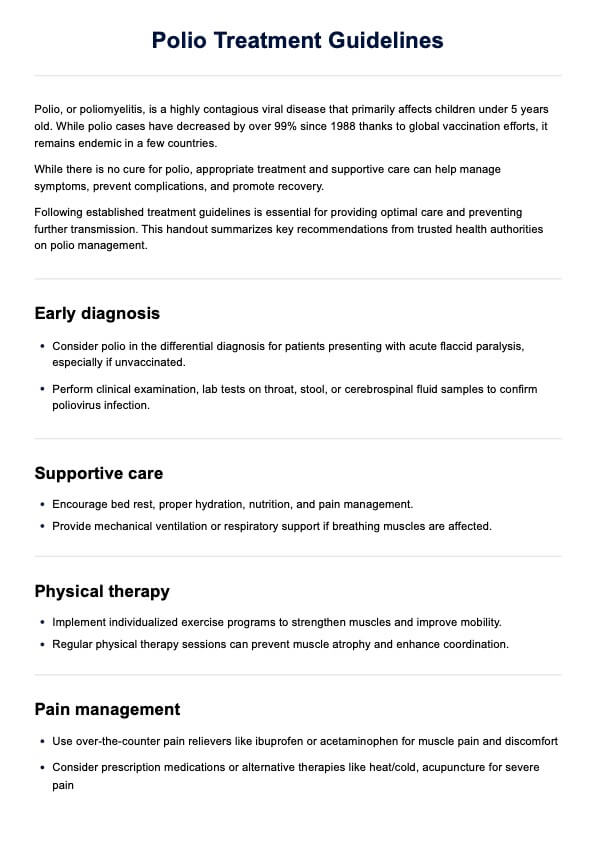One of the most effective ways to treat polio virus is through vaccination. Routine immunization for all children against poliovirus, starting from infancy is recommended. Oral polio vaccine and inactive polio vaccine are two types of vaccines used to protect against poliovirus.

Polio Treatment Guidelines
Learn about polio and how to manage this condition. Download a free Polio Treatment Guidelines handout from Carepatron.
Use Template
Polio Treatment Guidelines Template
Commonly asked questions
Most people who contract polio virus will experience mild symptoms and fully recover without any long-term effects.
While there is currently no cure for post-polio syndrome (PPS), there are various treatments that can help manage its symptoms. These may include physical therapy, occupational therapy, medication for pain and fatigue, and assistive devices such as braces or wheelchairs.
EHR and practice management software
Get started for free
*No credit card required
Free
$0/usd
Unlimited clients
Telehealth
1GB of storage
Client portal text
Automated billing and online payments











